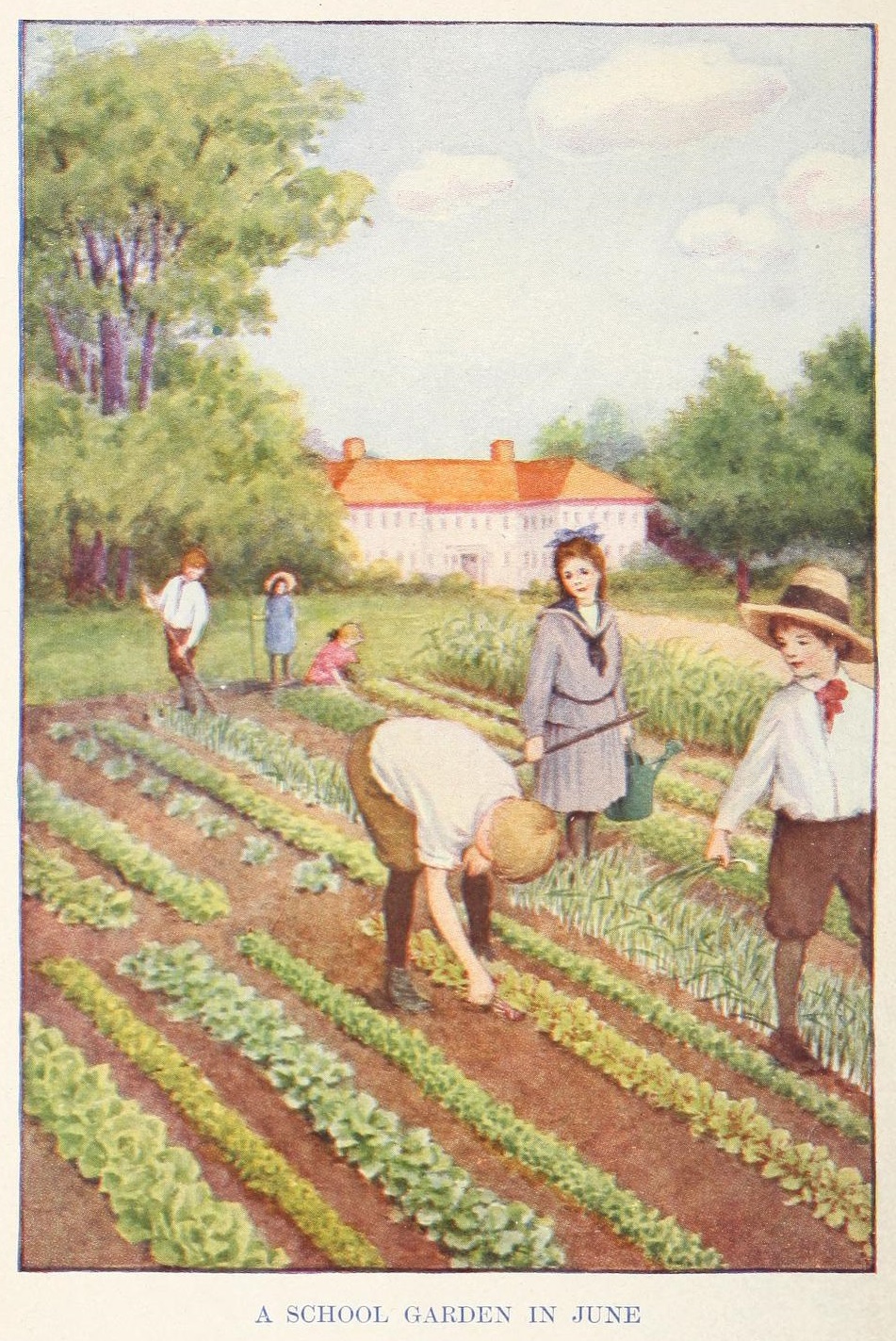The School Garden

Gardening is essentially practical. There is nothing better fitted for the healthful development of children. It affords opportunity for spontaneous activity in the open air, and possibilities for acquiring a fund of interesting and related information; it engenders habits of thrift and economy; develops individual responsibility, and respect for the rights of others; requires regularity, punctuality, and constancy of purpose.
Miller, Louise Klein (1904). Children's Gardens for School and Home: A Manual of Cooperative Gardening. New York: D. Appleton and Company
In 1906 the U.S. Department of Agriculture estimated that there were 75,000 school gardens in the United States (Jewell, 1907, pp. 37-38). The first American school garden was established in 1891 at the George Putnam School in Roxbury, Massachusetts. The peak of the school garden movement was reached in the years immediately following World War I when War Gardens turned into Victory Gardens. Finally, the urgency for surplus food production began to wane after the War. The value and use of school gardens is enjoying new life however, with the popularity of the local food movement, USDA's current Farm-to-School Program and the USDA's People's Garden.
This review of the school garden movement in the early 1900s reveals the roots of school gardening as an educational tool designed to enrich many aspects of children's lives.
 An official website of the United States government.
An official website of the United States government.

